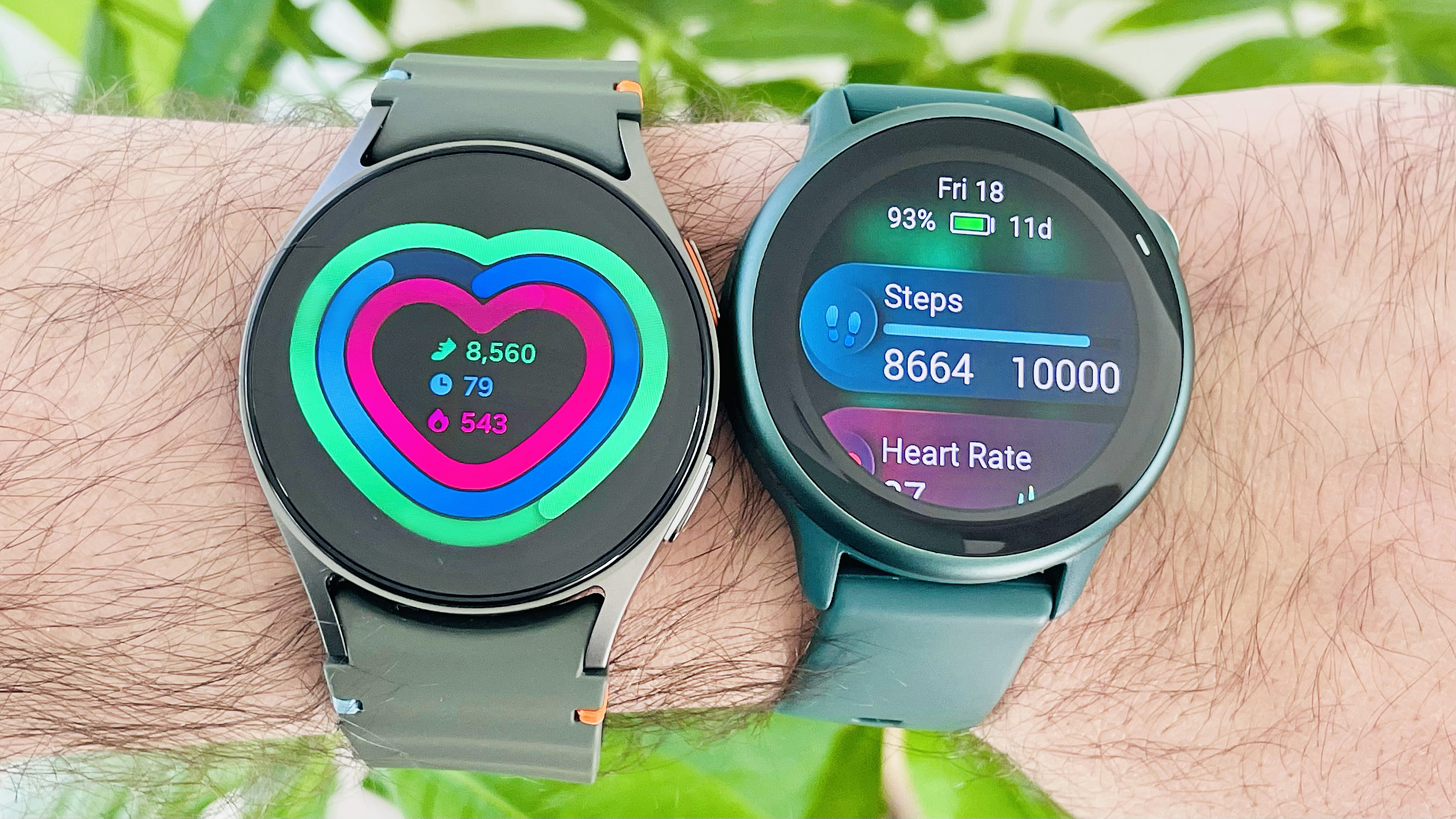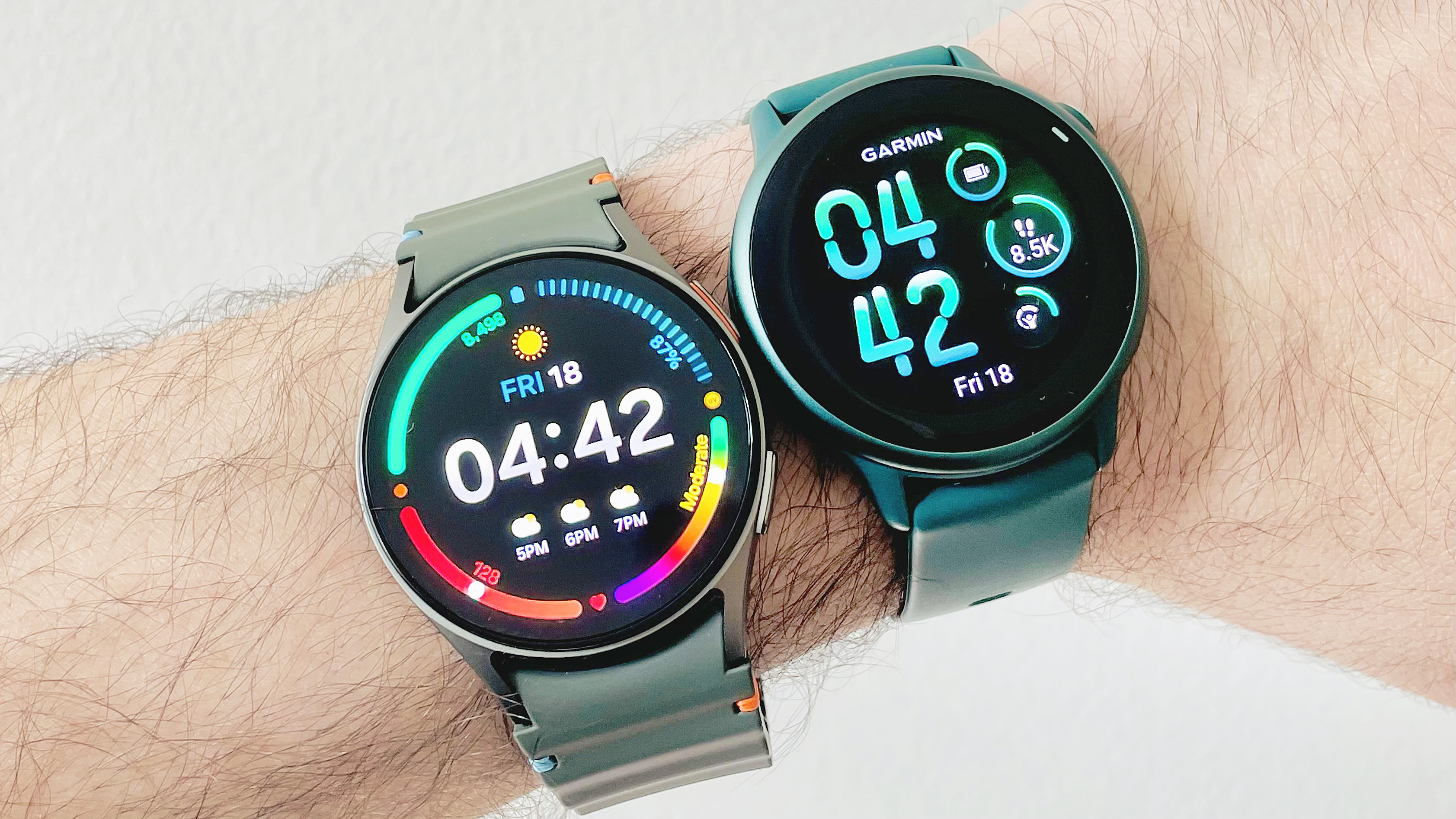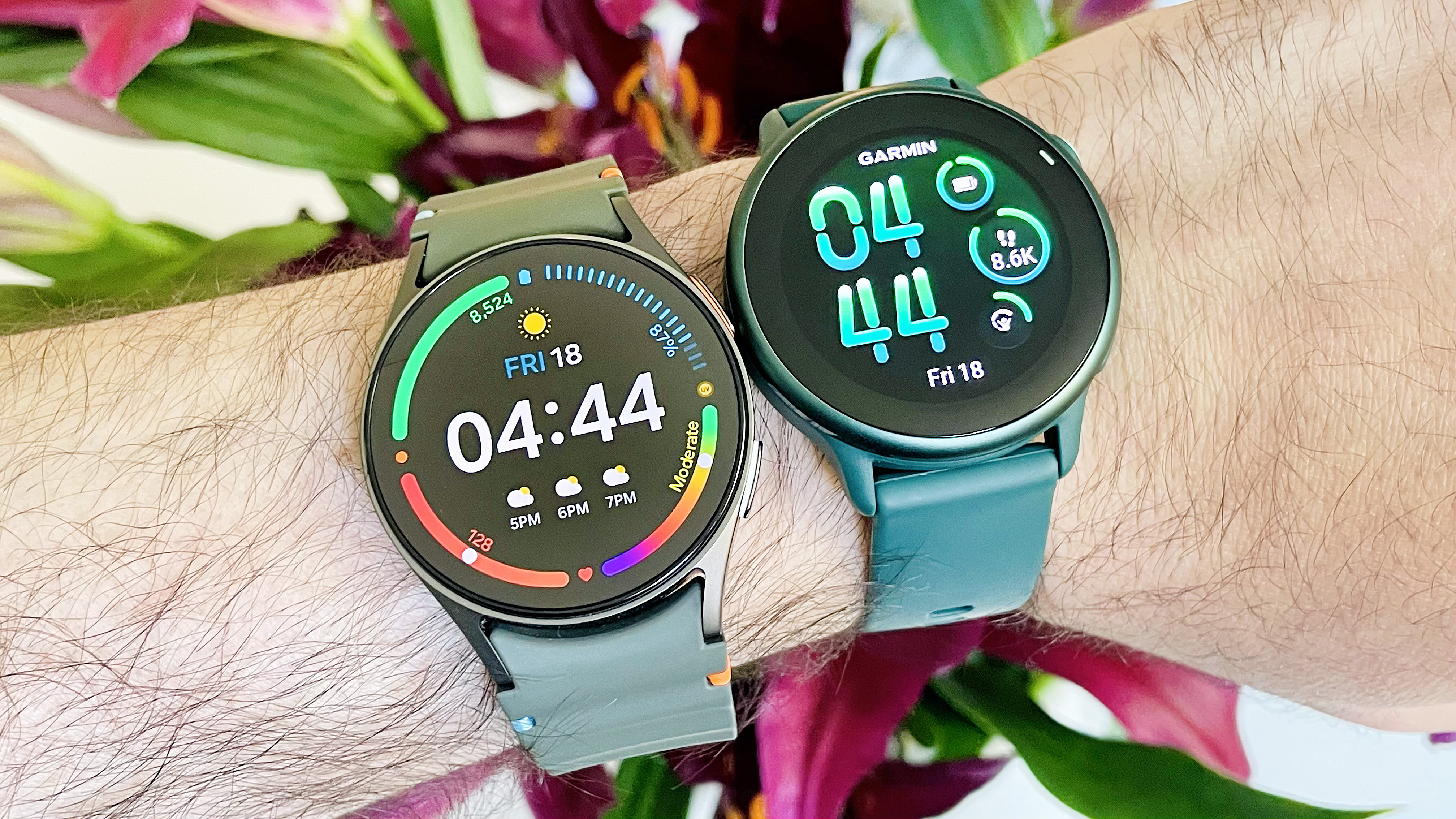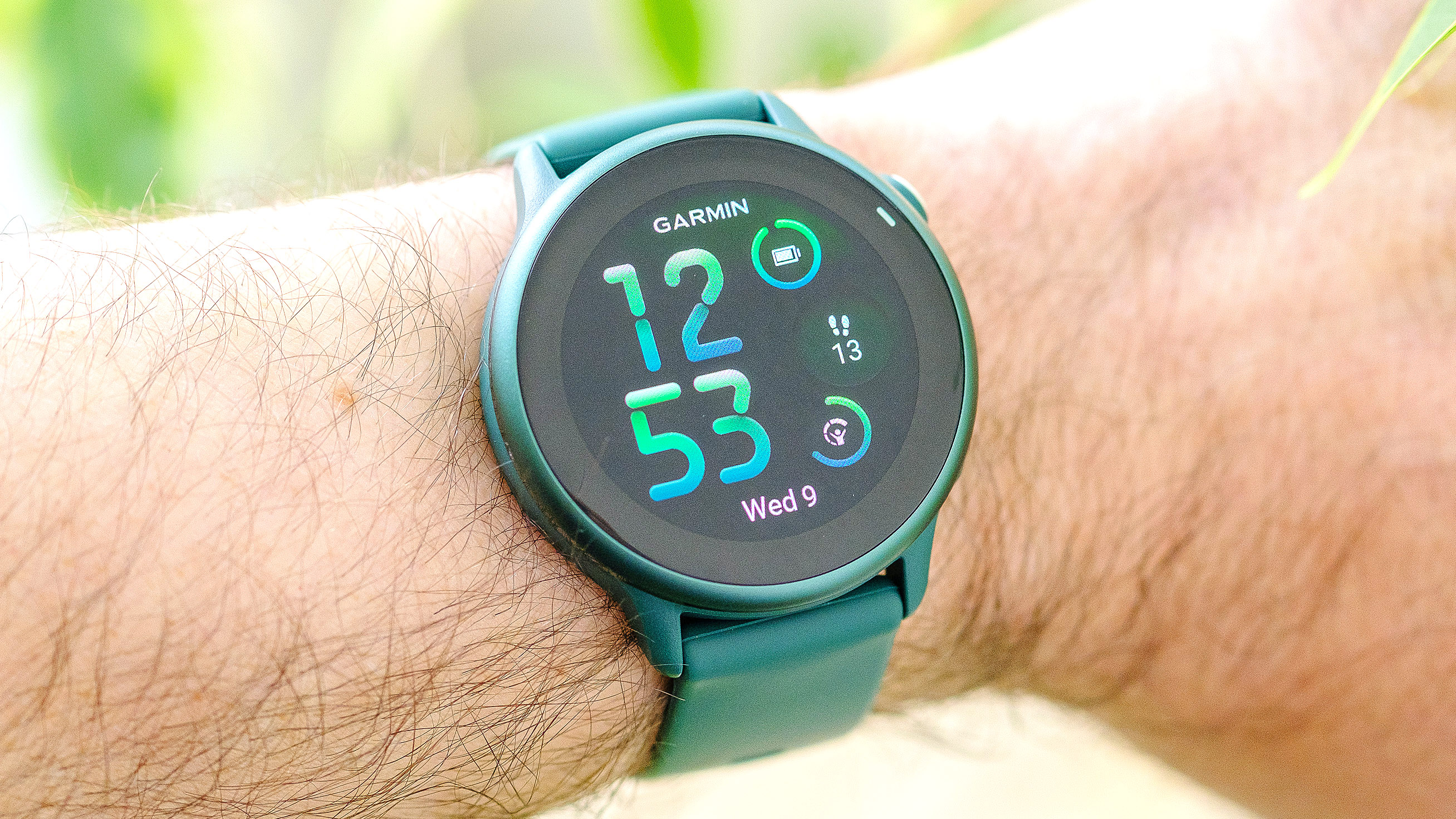
I walked 6,500 steps with the Garmin Vivoactive 6 and Samsung Galaxy Watch 7 to find out which is the more accurate fitness tracker. With matching $299 price tags, each of these smartwatches boasts impressive onboard fitness and location tracking tech. But only one can win this showdown.
For this comparison, I judged each device by how closely the final step count matched my actual (manually tallied) count of 6,500 steps. Other datapoints — like distance, climb, pace and heart accuracy — were also considered.
The Samsung Galaxy Watch 7 comes into this challenge with one win versus the Garmin Forerunner 165, a tie versus the Google Pixel Watch 3 and one loss versus the Apple Watch SE (2022).
The newer Garmin Vivoactive 6, meanwhile, enters the ring coming off its first career loss versus the Apple Watch Series 10.
So, which device will come out on top in this bout? Read on.
Garmin Vivoactive 6 vs Samsung Galaxy Watch 7: Compared
But first, here's a brief rundown of how the Garmin Vivoactive 6 and Samsung Galaxy Watch 7 compare in terms of features, specs and design.
While both start at $299, only the Galaxy Watch 7 comes with (optional) cellular connectivity. Similarly, like the best Apple Watch models, the best Samsung smartwatches work with an enormous range of third-party apps and also boast loads of native smart features.
The Galaxy Watch 7 is Android-only, but to get the most out of Samsung's impressive AI-backed wellness insights, you'll also need one of the best Samsung phones. On the flip side, all the best Garmin watches play nicely with both Android and iOS.
Another downside of the Samsung is battery life. I averaged roughly 24 hours per charge when testing it. The Garmin Vivoactive 6, meanwhile, consistently lasts for an entire week per charge in my testing. (The full review coming soon.)

When it comes to fitness training and recovery tools, the Vivoactive 6 has the Galaxy Watch 7 beat, though the latter does have some comparable features, like a daily Energy Score (similar to Garmin's Body Battery) and a daily Sleep Score. Speaking of sleep, both devices provide detailed sleep reports, but only the Samsung has an onboard ECG and body temperature sensor.
You also get useful safety tools on either model, including fall/crash detection.
And for fans of circular watches with big AMOLED touchscreens, the Galaxy Watch 7 and Vivoactive 6 look strikingly similar. Of course, the Samsung comes in two sizes, 40mm and 44mm, while the Garmin splits the difference with just a 42mm option.
There are some differences in the build quality. The Galaxy Watch 7 boasts a metal case, while the case on the Vivoactive 6 is mostly plastic. The Samsung also has a brighter screen. Both have a 50-meter water resistance rating, but the Garmin's plastic case makes it lighter, and ultimately, a little comfier.
Finally, the Galaxy Watch 7 and Vivoactive 6 each track a huge variety of workout types. As of writing, the Garmin supports 80 and the Samsung supports 100-plus, including, of course, walking.
Garmin Vivoactive 6 vs Samsung Galaxy Watch 7: Walk test
For this test (as always), I manually counted every step while wearing one device on either wrist. In this case, the Garmin was on my left wrist and the Samsung was on my right.
To ensure an accurate manual count, I've developed a simple yet reliable system: Only my left foot takes odd-numbered steps and only my right foot takes even-numbered ones. Also, every time my manual count hits 100 steps, I click my trusty old-school tally-counter and start over again at one.
As a control for distance, pace and elevation data, I also run Strava on my trusty iPhone 12 mini. Once I hit my intended number of steps — in this case, 6,500 — the test ends and I turn into a statue, careful not to move a single leg muscle until all of the data from either device is captured and logged.
Next, the fun begins. I head home and put all the deets into the chart you see below and figure out a winner. With this in mind, here's how things shook out in this comparison of the Garmin Vivoactive 6 vs. the Samsung Galaxy Watch 7.
Garmin Vivoactive 6 vs Samsung Galaxy Watch 7: Walk test results
I love a close call. Both devices were within 100 steps of my actual total, which is quite impressive. However, the Vivoactive 6 was ultimately closer, overcounting by just 26 steps compared to the Galaxy Watch 7, which undercounted by more than double that (58 steps). Still, either result is well within an acceptable margin for error.
Strava, meanwhile, placed my total at 6,506 steps, besting both wearables. Distance data is a near-match between the Garmin and Samsung and just a little bit higher than Strava's measure.
Elevation data is less consistent. Compared to Strava (which tends to be accurate in this department), the Samsung overcounted by 15 feet. This is a bit more than I expected, but still in a reasonable realm of accuracy. The Garmin watch, however, is off by a more significant 34 feet.

It's worth noting that only the Galaxy Watch 7 has an onboard altimeter for tracking elevation changes, which clearly puts the Vivoactive 6 at a disadvantage for this metric.
Fortunately, pace data is remarkably similar across the board. Strava and Samsung both calculate average pace based on your moving time alone, while Garmin provides both an average overall pace and an average moving pace, the latter of which is above. Apple, for what it's worth, only gives you an overall average pace (not a moving one), which I find less useful than the alternative.
Heart rate data between the Garmin and Samsung is also reassuringly similar, which shouldn't come as a surprise, given that both brands have long proven accurate in this regard.
Finally, the Samsung watch calculated slightly more total calories burned than its Garmin counterpart, and also ate through nearly twice the battery during my one-hour walk.
Garmin Vivoactive 6 vs Samsung Galaxy Watch 7: Winner

In this walk test showdown between two titans of the sub-$300 wearable market, the Garmin Vivoactive 6 comes out on top over the Samsung Galaxy Watch 7. Surprised? I know I am, at least, a little.
With a more advanced array of health-tracking sensors and a more premium design overall (brighter screen, metal case vs. plastic), I had my money on the Galaxy Watch 7 taking home the championship belt. But alas, I was wrong.
Ultimately, both the Samsung Galaxy Watch 7 and Garmin Vivoactive 6 proved more than reliable enough in this comparison test, and though it's fun to split hairs over which is (slightly) more accurate, I'd recommend either device for your fitness-tracking needs, with the Samsung being the better option if you also care about smart features, and the Garmin being better for hardcore workout enthusiasts and battery life fiends.
Which smartwatches/fitness trackers do you want to see me test head-to-head next? Let me know in the comments below. Until then, enjoy those steps!







